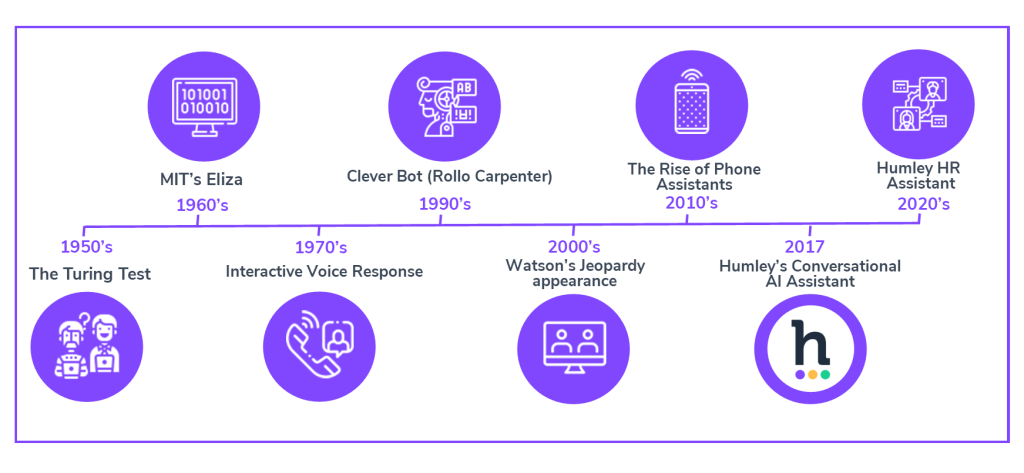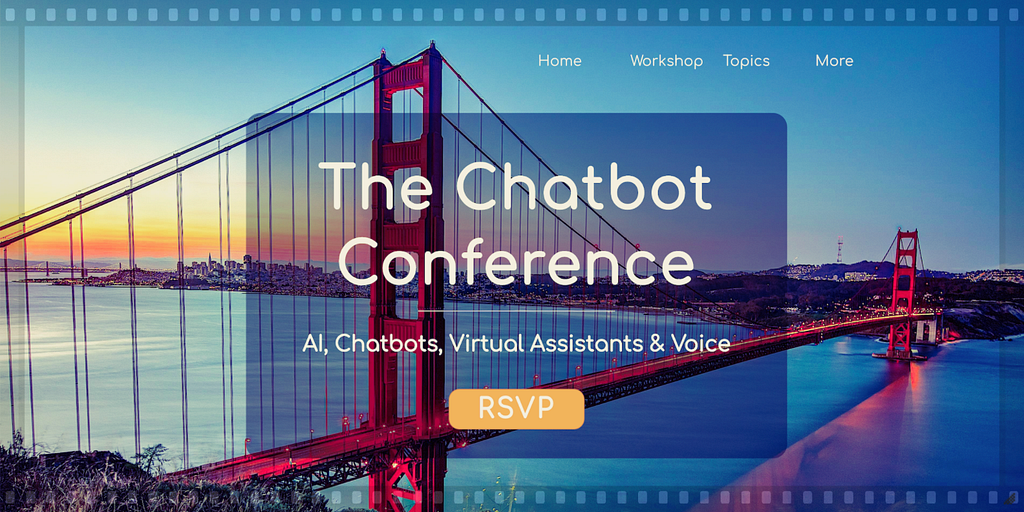Conversational AI has been on the radar for many organisations over the last few years. The challenges of the pandemic have brought the technology to the forefront of many businesses’ priority investment lists because of its ability to provide connectivity and on demand support. In fact, industry analysts Markets and Markets predict that by 2025 the Conversational AI industry will grow from $4.8 billion in 2020 to $13.9 billion in 2025.
With such demand, it is important for organisations to understand what exactly Conversational AI is and how to implement it to achieve transformative efficiencies and the outcomes desired.
What is Conversational AI?
Chatbots have been around since the early 1960s, getting slightly more sophisticated as the decades rolled on, but only as proof points of what was to come downstream. By the mid-2000s, chatbots began to be commercially deployed, automating basic customer requests, but largely proving to be disappointing and frustrating as their binary nature was limiting, often resulting in hilarious ‘rabbit holes’ of confusion with customers ultimately desperate for a real person to contact.

Over the last five years, rapid advances in Natural Language Processing (NLP) and Machine Learning (ML) combined with access to affordable computer processing has seen Conversational AI solutions emerge as the successor to the unsuccessful early attempts at automating repetitive tasks. User experiences delivered today are unrecognisable from the early chatbots with many interactions now indistinguishable from that of a human.

Crucially, these solutions can handle an ever-growing number of more complex tasks and requests. Furthermore, some Conversational AI Assistants solutions are now able to seamlessly integrate with enterprise applications, gathering data and information and presenting personalised responses back to the individual requestee. All the while respecting security parameters and data sensitivity.
What are the benefits?
Conversational AI enables organisations to provide an on-demand support resource for customers, suppliers, and employees. Its utilisation of Natural Language Processing and Machine Learning means that the technology is able to understand the meaning and intent of user queries in a much more personalised and sophisticated manner than chatbots.
This means that organisations can provide significantly enhanced experiences and improves customer and employee satisfaction leading to greater retention and brand reputation. Additionally, the Assistants deliver time savings and efficiencies to internal teams such as HR and Customer Service through streamlining the handling of requests, freeing them up to focus on more strategic and higher-value tasks.
Trending Bot Articles:
1. The Messenger Rules for European Facebook Pages Are Changing. Here’s What You Need to Know
3. Facebook acquires Kustomer: an end for chatbots businesses?
From a technology perspective, Conversational AI offers many advantages over traditional chatbots, through the platforms ability to learn as a natural consequence of processing but also through automated training and ingestion of documents to create user journeys

This means platforms such as Humley’s Conversational Assistant require no coding or technical knowledge to set up, putting the power in subject matter experts’ hands rather than IT teams, leading to rapid deployment and realisation of ROI.
Steps to deploying a Conversational AI Assistant
1. Identify a Use Case
With AI and automation technologies becoming such a top investment priority for enterprises, AI for AI’s sake can tend to lead the project objectives rather than the business case itself.

For example, a customer service team has been given a budget to investigate automate customer care. They have identified that a chatbot will enable them to do this, however, upon implementation have discovered that the technology is not returning the efficiencies they were hoping for.
Consequently, the project fails to scale or move past POC. Yet when it comes to addressing the reason for the failure, the technology is working as intended, rather it is the internal company processes that have created a barrier. On closer examination, the challenges that the customer service team faced are not an inability to handle call volumes, but rather the internal processes and systems that do not allow them to do it efficiently.
The problem within this scenario is that the team has not understood what problem they are trying to solve. In order to ensure the success of any project, organisations and teams must truly understand the outcomes they are looking to achieve and whether Conversational AI is the most appropriate solution to achieve this.
Example Business Cases Where Conversational AI Can Help
HR

A Conversational Assistant within HR eliminates the need for employees and managers to navigate complex HR, Payroll, and Business systems and reduces the pressure on HR Teams through automating all of the common HR requests and associated tasks. Delivering improved compliance, awareness, productivity, and employee engagement leading to increased retention and satisfaction.
IT & Help Desks

Reduce the pressure on IT Teams by enabling users to resolve their own tech issues and queries quickly and seamlessly. Assistants enable users to ask general IT questions, submit tickets, and even set up new devices and system access.
Contact Centres

Conversational Assistants help to reduce the pressure on contact centres by providing agents with a single point of reference for all customer information as well as enabling customers to self-serve through resolving their own queries. Reducing waiting times, increasing first-time case resolution rates, and improving customer experiences.
2. Creating User Journeys
One of the major challenges faced by organisations looking to implement a Conversational Assistant is establishing the likely customer, employee, or supplier interactions. This task can be complex and time-consuming, typically relying on functional teams such as HR, Sales, Support, and IT to understand and identify the wide variety of queries and outcomes. This can take up valuable resources and means projects may take longer to move to ‘live’ than anticipated, resulting in frustration and delays.
In order to, accelerate this process and reduce the pressure on functional teams, organisations must look to their existing knowledge base and documents to kickstart their deployments.

This approach not only significantly reduces the time and resource needed to build the platform, but also means that employees and customers can access the relevant information they require quickly — improving compliance, productivity, and satisfaction.
3. Iteration & Data
Data is a key part of any AI project, particularly if there is some element of Machine Learning or analytics. The principle here is laudable: the collection of data to understand user behaviour is essential, as is a clear understanding of what the technology success metrics are. However, the desire to keep these technologies in stasis during a trial period is perhaps a misunderstanding of what role applications such as Conversational AI must play.

There are two reasons for this. For example, Conversational AI will not have been trained correctly, have the right information or the experience of dealing with real people.
All of which means that within the first few days, weeks, and months the Assistant will need considerable care and attention. Providing this level of support, is perhaps not what a team was expecting and therefore can immediately reduce adoption and usage, particularly if some technical knowledge is required. Hence, iteration is crucial, and the success metrics need to be based on the rate of improvement as much as the overall accuracy of the service itself.
4. Onward Journey & Optimisation
Once the first use case has been successfully implemented and is deployed within a ‘live’ environment, the process can easily be scaled and repeated into other areas of the business, applying learnings and utilising the project successes to gain wider organisational adoption.
Continual optimisation is key to the ongoing success of any Digital Transformation project. Therefore, organisations and solution providers should ensure regular reviews and service monitoring as part of their processes.
Fundamentally, the success of any project is based on the strong relationship between key stakeholders, users, and technology vendors. Through adopting a collaborative and open approach to achieve the goals of the organisation, long-term success can be achieved.
Don’t forget to give us your 👏 !




How to get started with Conversational AI was originally published in Chatbots Life on Medium, where people are continuing the conversation by highlighting and responding to this story.